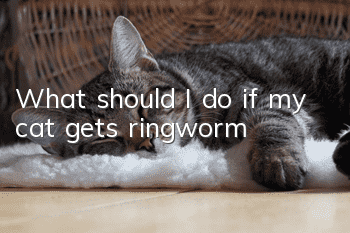Popular science | Three major misunderstandings we have about cats

In autumn and winter, more and more people buy/keep cats. According to statistics, the total number of pet dogs still ranks first among all types of animals, but in terms of growth rate, cats have surpassed dogs. Compared with dogs, most pet owners have a lower understanding of cats, and there are more misunderstandings about them. In this article, Chong Ai Jun summarizes and analyzes three common misunderstandings, hoping to help store managers popularize knowledge.
Misunderstanding 1: Cats are aloof
An article titled "Cats' indifference is actually a sign of love" published on the website of the British "Times" on September 23 said that they often look cold and aloof, and are not moved by the love of their so-called owners at all.
However, some research says that cats may love humans more than we think. The study found that cats are deeply attached to the people who care for them. This seems to be comparable to the emotional connection between a dog and its owner, or between a baby and its parents.
Researchers observed 100 cats in an experiment. This experiment has been used in the past to study children's attachment to their mothers. In the experiment, a cat first spent two minutes in an unfamiliar room with its owner, then it was left alone for two minutes, and then it was reunited with its owner for the next two minutes.
The experiment was based on the principle that a cat with a so-called "secure attachment" to its owner experiences less stress. This means that during the reunion stage with the owner, it is not only interested in the owner, but also in the surrounding environment. Cats may feel confident enough to explore the room when their owners are around, but this may make them appear cold.
On the other hand, cats that are "insecurely attached" to their owners will display signs of stress, such as tail twitching or mouth licking. They may cling to their owners—jumping into their laps and refusing to move when they return to the room—or they may ignore their owners completely. Some cats can switch between the two.
When experiments were conducted on children, about two-thirds of the children were "securely attached" to their parents, while the other children were "insecurely attached." The same is true when dogs are tested versus their owners.
Experiments on cats—both kittens and adults—produced exactly the same results: two-thirds of the cats felt quite comfortable and began exploring the room when their owners returned. The remaining cats fell into the "unsafe" group.
The researchers then trained the cats for six weeks to observe "unsafe"quo;Whether it is possible for a cat to develop a "security attachment" with its owner. The training session failed. It seems that a cat’s temperament is innate and cannot be changed.
The researchers believe the results of this experiment challenge the common belief that cats are solitary animals. "Our research shows that when cats live with humans in a subordinate state, most cats use humans as a source of comfort," said Dr. Christine Vitale of Oregon State University. "When they are anxious, they often use humans as a source of comfort. Your cat relies on you to feel safe." Testing has shown that the attachment between cat and owner "remains relatively stable over time, even after training and socialization interventions," Vital said. .
Misunderstanding 2: Cats have nine lives
Cats are naturally very curious, and they also like to "jump over the ridges of the house" at home, jumping out from high places or even windows. This makes many people wonder, how high can a cat jump from and still be safe? Once upon a time There is such an anecdote that a cat in New York fell from a 32-story building and did not die, but was only slightly injured. This surprises many people, and they even believe in the saying that "cats have nine lives." However, is it true that nothing will happen to a cat if it falls from a height?
A cat was trapped in a tree in Kharkiv, Ukraine. Local firefighters used a ladder to rescue the cat. The trapped cat suddenly jumped down when the firefighters approached. The tree trunk was about 20 meters above the ground. Fortunately, the cat did not survive. No injuries.
There is also this enthusiastic young man who saw a poor kitten trapped in a deep well and planned to do something brave. Unexpectedly, just when the little brother was about to reach the bottom of the well, the cat did something amazing...
Obviously, this cat fell into a deep well and was not injured. So, do cats really not get hurt when they fall from heights?
Scientific research shows that cats that fall from 3 to 4 meters are less injured than those that fall from about 15 meters - consistent with basic understanding; while cats that fall from more than 20 meters, no matter how high, are more likely to be injured The degree is basically the same.
The reason is that most cats that fall from 3 to 4 meters land with their feet first. However, when falling from a higher place, cats will use another method to protect themselves: when they land, they do not straighten their limbs to the ground, but spread their limbs like a skydiver, letting their belly touch the ground first. But when cats use Thoracic injuries such as a collapsed lung or broken ribs are prone to occur when landing this way.
just in caseIf a cat does not have a good balance in the air, it will easily break its ribs or rupture its internal organs, leading to hemorrhage and death. Therefore, friends who live in high-rise buildings and have cats should pay attention and be sure to close the windows at all times.
"A cat can't be killed by a fall"?——I don't know how many cats were thrown to death because of this sentence
And some naughty cats climb to high places, and once they exceed the height they can control, they will also ask people for help.
A cat’s spine can bend to an incredible degree; it can turn around quickly when falling; its paw pads can cushion and absorb shock; its tail can maintain balance. These are all true, but if the height is too high, the cat still won’t have time to save itself.
So, stop saying that cats have nine lives. Nature is fair. All creatures have only one life, and we must cherish it. Finally, Chong Ai Jun makes clear his position: He severely condemns those who throw cats away for experiments in order to prove that "cats have nine lives". They are crazy and meaningless. Life is not a tool to satisfy curiosity.
Misunderstanding 3: Cats should be given away when pregnant
Pregnancy is a happy event - otherwise why would it be called "youxi"? But for families with pets, it seems that there is a "custom" to send cats and dogs away. What's the reason? - It is said/probably/possibly that cats can be infected with Toxoplasma gondii... right?
Let’s first take a look at what will happen if you are infected with Toxoplasma gondii
Healthy people who are infected with Toxoplasma gondii generally do not show obvious symptoms due to the effects of the human immune system. Only 10% to 20% of infected people develop swollen lymph nodes, muscle pain, and other mild symptoms that last for several weeks and then disappear (acute toxoplasmosis).
People eating the meat of infected animals is the main cause of infection.
Cats (felines to be precise) are the final hosts for the spread of Toxoplasma and play an important role in the spread of Toxoplasma. Toxoplasma proliferates within their intestinal epithelial cells and is eventually released into the environment in the form of oocysts in their feces.
Dogs are the intermediate host of Toxoplasma gondii. After a dog is exposed to Toxoplasma gondii, it cannot produce cysts that are infectious to humans. Its feces and excrement are not infectious, so you will not be infected with toxoplasmosis by simply contacting dogs. If you do not eat Dog meat is not contagious.
So how to avoid being infected with Toxoplasma gondii?
——What we should focus on preventing is "disease entering through the mouth".
Should pregnant women not be able to raise cats? - Pregnant women can raise cats, as long as they have a correct understanding of Toxoplasma gondii, scientific cat raising, and effective prevention.
Be sure to do the following: First, pregnant women should stop changing the cat litter themselves and leave the task to the father of the child. If you must do it yourself, be sure to wear gloves and wash your hands with warm water and soap when you're done. (Others should also wear gloves and wash their hands when changing. It would be better if there is disinfectant)
Second, make sure the cat litter is changed every day. Toxoplasma gondii eggs in cat feces are not infectious within 1 to 5 days, so timely cleaning is very important!
Third, do not scatter the replaced cat litter everywhere.
Fourth, feed your cat commercial cat food or canned food. Do not feed raw or undercooked meat.
Fifth, don’t let the cat go out. Keep it indoors at all times. Special attention should be paid to the balcony. The open balcony often becomes a perfect battlefield for cats to capture birds.
Sixth, avoid contact with stray cats, especially young cats (young cats are more likely to come into contact with garbage and pollutants, and are prone to first infection). Don't get a new cat while you're pregnant.
Seventh, be sure to wear gloves when coming into contact with soil and sand (such as growing flowers or going outdoors), because they may be contaminated by Toxoplasma gondii-infected feces. Also remember to wash your hands with warm water and soap.
Eighth, water and soil contaminated by Toxoplasma gondii may contaminate some fruits and vegetables. Please make sure to wash, cook or peel them when eating.
In addition, meat must be fully cooked (putting the meat in the freezer of the refrigerator for a few days before cooking is more helpful in killing pathogens)
If you have been infected with Toxoplasma gondii before pregnancy, you are generally no longer at risk of infection after pregnancy. Because only pregnant women who have not been infected with Toxoplasma gondii before pregnancy can infect the fetus with the first (primary) infection during pregnancy. At this time, as long as you pay attention to hygiene habits, your pet can stay with you.
In any industry, if you have not received professional and systematic training, you will easily fall into the trap of rumors. After all, there are only a few people who have received professional training, so "spread rumors with just one mouth, but you will lose your legs if you refute the rumors." The above three points are some of the misunderstandings that most people have about cats. Store managers can share with friends or invoice circles to popularize cat knowledge. Shops that provide cat services or sales can also make tips or posters and post them in the living display area or grooming waiting area.wait. When communicating with cat owners, you can also give friendly reminders to new cat owners to improve your personal and store professionalism.
Part of the content of this article comes from: "Current Biology"; Sina.com-Life Pets; U.S. Centers for Disease Control and Prevention
- What do I need to prepare to raise a kitten?
- Reasons and solutions for hair loss in Egyptian cats
- What basic care does a cat need every day and every week?
- What are the effects of hair removal cream and cat grass on cats eating hairballs?
- What to do if a Norwegian Forest Cat coughs
- Are there any harms to adult cats eating kitten food?
- How many months old can an exotic shorthair cat eat cat food? Common knowledge on feeding exotic shorthair cats!
- How to train a cat not to jump on the bed? How to train a cat not to jump on the bed!
- What causes tears in cats
- A complete collection of cat training strategies, a must-read for poop scrapers!



